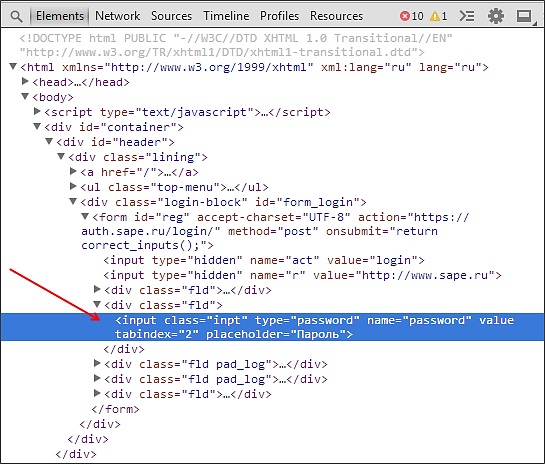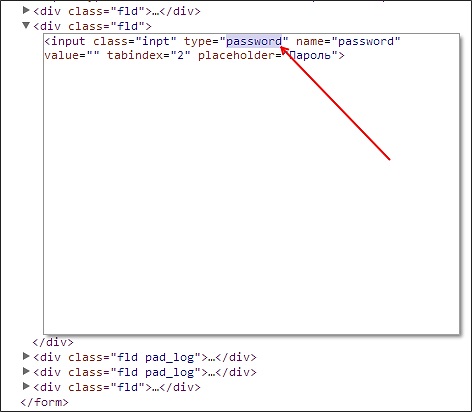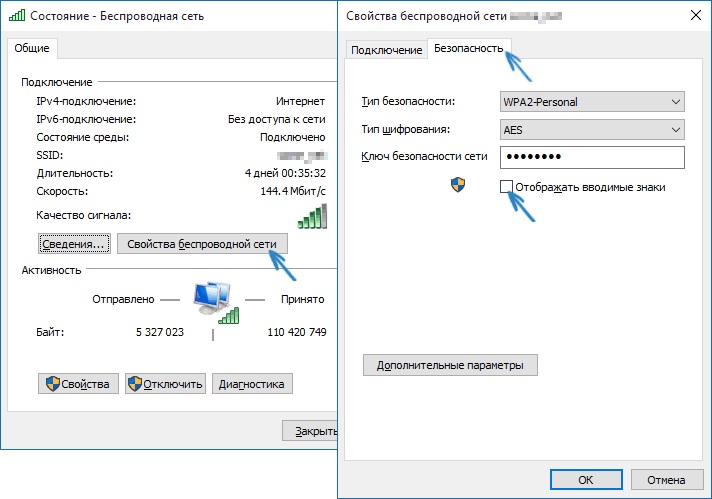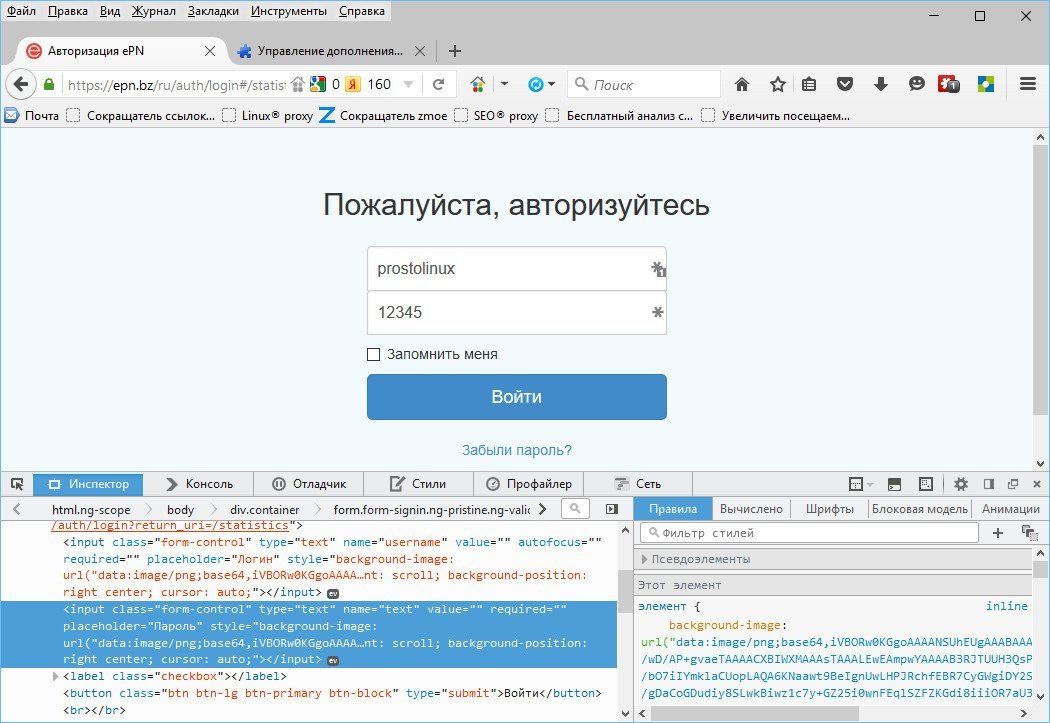How to open hidden password in the browser. How to see the password under the asterisks
Dear friends, today we will learn how to view the password under the asterisks. But first, you will need to figure out which programs or sites data can be viewed, as well as under what conditions. In general, before performing any actions, you will need to understand the situation a little.
So, you can see the following passwords:
- From any login on any site using a browser. This will be useful if you have changed your password, for example, from your mailbox and forgot him. The recovery procedure is far from the most interesting. But if this data is saved in the browser itself, then you can view it without any problems.
- From Wi-Fi on a computer or laptop (if they are already connected to the network). So, you came to visit a friend, and he does not know the password for his Wi-Fi. You might be thinking: how so, is it impossible? Friends, this is as much as possible! But you can find a way out of this situation.
We remind you once again that to view the password, the data must be stored in the browser (for the first case) or in the computer itself (for the second case). Now you can proceed directly to the action.
We put on gloves and perform the operation ...
So, we slowly got to the most important thing: how to view the password under the asterisks. From the examples described above, we realized that this can be done in two cases. Accordingly, we will consider them.
In browsers
- We will look at this example using the Google Chrome browser. The situation with other browsers will be described later. So, run Chrome on your computer or laptop.
- Next, open the required site.
- Find the fields for entering login-password information on the page of the running site and click right click mouse on your password under the asterisks.
- In the menu that appears, click on "View Code".
- A special panel will open on the right, where a certain field will be highlighted in blue.

HTML code of the page in Google chrome
- Here we will need to change "type = password" to "type = text". To do this, double-click the left mouse button on the word password, type the word text instead and press the Enter key.

You need to change "type = password" to "type = text"
- Now, in the password field, you will see the combination that you used to enter a specific site.
Other browsers allow you to do this too. The actions are repeated, with the exception of the fourth point: in Opera you will need to select the item "Inspect element", and in Mozilla Firefox you will need the item "Explore element". In other browsers, instructions from Chrome are suitable, since they are built on the same engine. For example, you can safely perform these manipulations in Yandex Browser.
Wi-Fi password
- Go to the "Control Panel" menu, which is located in "Start".
- Now open the "Network and Internet" tab.
- Next, launch "View Network Status and Tasks".
- In the window that appears, you will see a map of the connection to The world wide web... Your wireless network will be on active networks (the text you need is highlighted in blue). Click on it.
- In the new dialog box, click on the "Properties wireless network».

- Now open the "Security" tab and check the box next to "Show entered characters". Thus, you can see the password instead of the asterisks from the wireless Wi-Fi network, even if it is not on the router.
And how to show and find out the password instead of asterisks in other programs?
It is important to understand that if you want to hack or find out someone else's password, then such manipulations are punishable by law. This is strictly confidential information, which in no case should be violated. For this, you can get a real term in accordance with part one of Article 272 of the Criminal Code of the Russian Federation "Illegal access to computer information". But if you need it specifically for yourself (that is, if you need a password from your own page or mail), then you can try special programs third party developers.
Please note that no one guarantees their functionality. You especially need to be careful with paid services who can offer you similar services. They can deceive you and take money, so it is better to try to restore access yourself by official means and methods. As a last resort, you can directly contact the service, the password for which you have lost, to recover your data.
Conclusion
Dear readers, today we have tried to find out how to see or show a password instead of asterisks from your login on sites or from a wireless network on a computer or laptop running the Windows operating system. Let us remind you again that to perform these actions you need to store the data in the browser (for the first case) and in the computer itself (for the second case). Other methods will already mean hacking and theft of confidential information. We considered viewing the information already available.
- In the browser, you need to right-click on the password field, then select " Source"(By the example of Google Chrome) and instead of the word password, type the word text, only then press the Enter key on the keyboard.
- To view the password from Wi-Fi, you need to go to the network settings, which are one of the items on the control panel, open the properties of the wireless network and in the "Security" tab, put a checkmark in front of the item "Show entered characters".
We hope that everything worked out for you, and you were able to restore access to your mail or any account. Tell us in the comments why you might need such an operation. Which of the above methods did you use to accomplish your goal?
The other day I had a situation: a friend forgot the password on one site, the browser saved it, but the password is under the asterisks and it is not visible. And the password had to be urgently told to another person. Familiar situation? How can I see the password instead of asterisks?
Since a friend had Windows on his laptop, at first I began to look for programs that allow you to open the password under the asterisks. But surprisingly, not a single program was able to cope with this task: either the site had good protection, or were the programs unfinished? But still I solved the problem and the solution turned out to be terribly simple.
How do I see my password under the asterisks in Chrome?
It turns out that everything is solved only by means of the browser. First, I'll show you how to open a password under the asterisks in Chrome, and then I'll try to do the same in other browsers.
Let the test site be Affiliate program ALIEXPRESS which I am using. This is how the password is hidden under the asterisks:

In the upper left corner there is an ARROW button, press it and move the cursor over the password field. In the developer tools, in the left window, we are thrown to the part of the code in which the password is written. As a result, we see something like this:

Here we will be interested in this line:
We need to replace the word passworf with the word text to get it like this:
After changing the word, press ENTER and OPA - now it's easy to see the password under the asterisks!

As you can see, everything is outrageously simple and you don't even need any additional programs. How can I do this in another browser, for example, in firefox?
How do I see my password under the asterisks in Firefox?
In Firefox, everything is done in the same way: press Ctrl + Shift + C and immediately go to the inspection mode. We also change the word password to the word text and see our password:

I am sure that it will be useful to someone, as it was useful to me. In any case, it will be useful to me myself, since everything is forgotten and I myself often return to my own notes.
If you know other methods of showing a password instead of asterisks, it will be interesting to know about them.
Published on 23 Nov 2015 08:59 © Just Linux | Everything about Linux, Android and Windows.
Most of us are used to remembering our passwords right in the browser we mostly use. I am sure that almost every user has his own, closest and "native" browser, to which we are already accustomed. Of course, remembering the password in the browser is very convenient, because you do not need to enter it in a new way every time you visit a particular site. But, if it happens to you, for example, to enter the mail from some other one, or if it becomes necessary to simply change the password to another, then it is not at all a fact that you will be able to remember the old password. One should not despair here. You can see on the monitor screen not only the stars, but also the letters and numbers you need.
How can I view saved passwords in a browser?
So let's start with the most popular browser today, namely Google chrome(I also use it). In this browser, click on the strip (or rather on several horizontal stripes) "Settings and Management" in the upper right corner. Then there already select "Settings", go down to the very bottom of the page and click on the line "Show advanced settings". After the page opens, you will need to click on the "Manage saved passwords" item. In this case, a window will appear where you just need to find the site you need. Click on this site and see a window with the words "Show". Click on it and finally you got to the cherished password.
The next popular browser among users is Mozilla Firefox. In it, click the tools, then the "Settings" item and select the protection tab. Here you will find the item "Saved passwords" and then, after clicking on the button "Show passwords" simply confirm your action by clicking "Yes". Now all your passwords will appear in front of you.
V Opera you should first click on "Tools". This button is on the page bar at the top. There you already need to go to the "General settings" (you can use the CTRL and F12 buttons at the same time) and click on the "Forms" tab. Here you will see the "Passwords" button you need, after clicking on which you will see all those sites where you saved passwords from this computer. If you check the box in the menu item "Enable password management", then you no longer need to retype your fancy password every time. It will be enough just to click on the key image and then the authorization fields will be filled in independently.
Now I hope you will not have any special difficulties in detecting the passwords you have saved in your browsers. However, there is another method with which you can also see the password in the browser. This is for more advanced users. Although there is nothing complicated here. You can see for yourself.
 Architecture of a distributed control system based on a reconfigurable multi-pipeline computing environment L-Net "transparent" distributed file systems
Architecture of a distributed control system based on a reconfigurable multi-pipeline computing environment L-Net "transparent" distributed file systems Email sending page Fill relay_recipients file with addresses from Active Directory
Email sending page Fill relay_recipients file with addresses from Active Directory Missing language bar in Windows - what to do?
Missing language bar in Windows - what to do?